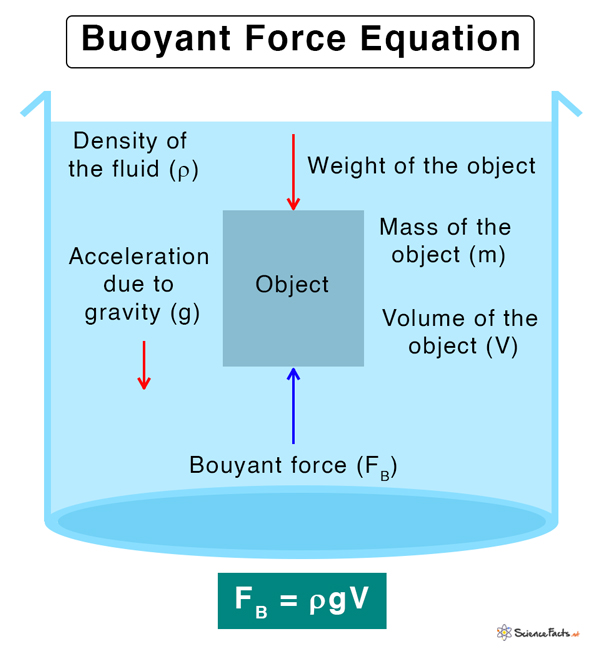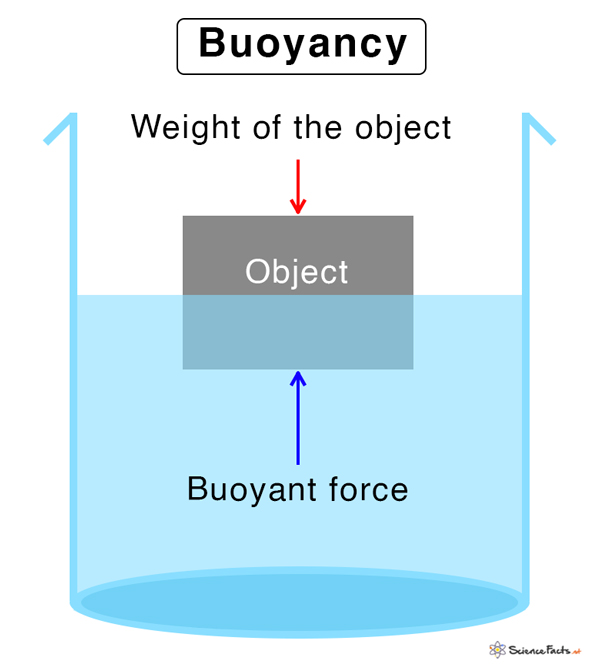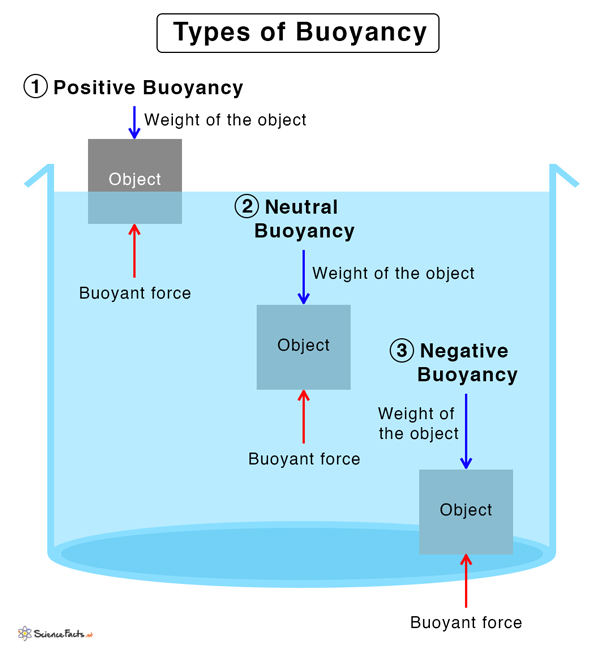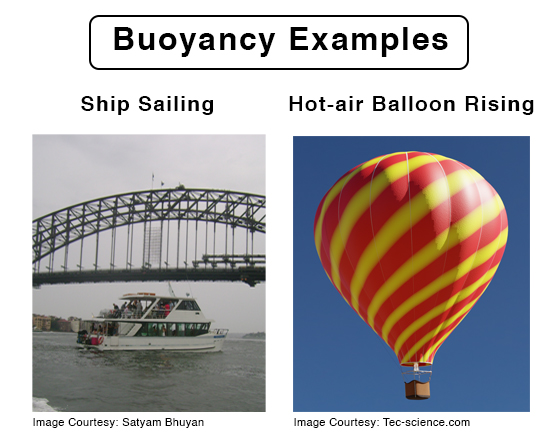Buoyancy
What is Buoyancy
When an object is immersed in a fluid, wholly or partially, the fluid exerts an upward force opposite its weight. This phenomenon is known as buoyancy, and the upward thrust is known as the buoyant force. A characteristic of buoyancy is that it determines whether an object will float or sink.
Who Discovered Buoyancy
Greek mathematician Archimedes, around 250 BC, discovered the law of buoyancy, which is today known as Archimedes’ principle.
Buoyancy and Archimedes Principle
The Archimedes principle follows the law of buoyancy. According to this principle, when an object is immersed in a fluid, partially or wholly, it displaces the fluid. The weight lost by the object is equal to the weight of an equal volume of the displaced fluid.
Buoyant Force: How Does Buoyancy Work
When a solid object is immersed in a fluid, it experiences pressure in all directions, known as fluid pressure (Pascal’s principle). The fluid can be air or water. If the fluid is water, then it is known as hydrostatic pressure. The pressure increases with the depth of the fluid. Therefore, the pressure at the top of the object is less than that at the bottom. This pressure difference causes an upward force known as the buoyant force. It is a contact force and opposite in direction to the weight of the object.
Types of Buoyancy
There are three types of buoyancy.
1. Positive Buoyancy
When the weight of the fluid displaced by the object is more than the object’s weight, then the phenomenon is known as positive buoyancy. In this case, the object will float on the surface of the fluid.
2. Negative Buoyancy
When the weight of the fluid displaced is less than the object’s weight, it is called negative buoyancy. In this case, the object will sink.
3. Neutral Buoyancy
When the weight of the fluid displaced is equal to the object’s weight, it is called neutral buoyancy. In this case, the object the object neither sinks nor rises. It will be suspended in the fluid.
Buoyancy Examples
Here are some examples of the buoyant force in everyday life.
- Boat sailing on the river
- Iceberg floating on water
- A person with a life vest floating on water
- Ship floating on the ocean
- Helium balloon rising in the air
Buoyant Force Equation: Law of Buoyancy
The buoyancy equation can be found by determining the displaced fluid’s weight and using the force balance equation.
How to find Buoyant Force
Suppose an object of volume V is immersed in a fluid of density ρ. The object will displace an equal volume of the fluid. The mass of the liquid displaced is,
M = r x V
The weight of the displaced liquid is,
W = M x g
Or, W = r x V x g
According to Archimedes’ principle,
Loss of the object’s weight = Weight of the displaced liquid
This loss of weight is the thrust or buoyant force (Fb). Therefore,
Buoyant Force Formula: Fb = r X g X V
Unit of Buoyant Force: Newton or N
This equation is also called the law of buoyancy. It gives a relationship between buoyancy and density. As can be seen, the buoyant force is proportional to the density. The factors that affect buoyancy are:
- The density of the fluid
- The volume of the fluid displaced
- Acceleration due to gravity
The buoyant force causes objects to float. The point on the object where it is applied is called the center of buoyancy.
Water Buoyancy: Water applies an upward thrust on objects that are immersed in it. Its density is 997 kg/m3, so its buoyant force is.
Fb = 997 kg/m3 x 9.81 m/s2 x V
Or, Fb = 9781 kg/m2s2 x V
Saltwater’s density is even higher, at 1024 kg/m3, which explains why it is easier to float.
Air Buoyancy: Like water, air exerts an upward thrust on objects that fall through or are suspended in it. Its density is 1.225 kg/m3.

Applications of Buoyancy
Here are some real-life applications of buoyancy.
- To measure the volume and density of objects
- To measure the relative densities of liquids using a hydrometer
- To control the position and depth of a submarine by filling its ballast tank with water
- To control the position and height of a hot air balloon by varying the quantity of the hot air inside
- To enable fish to maneuver through water by filling their bladder with gas
-
References
Article was last reviewed on Friday, October 18, 2024










Very useful to me sir
You’ve got you descriptions crossed up between negative buoyancy/suspended and neutral buoyancy/sinking
2. Negative Buoyancy
When the weight of the fluid displaced is less than the object’s weight, it is called negative buoyancy. In this case, the object will be suspended in the fluid.
3. Neutral Buoyancy
When the weight of the fluid displaced is equal to the object’s weight, it is called neutral buoyancy. In this case, the object will sink.
Thank you. We have made the corrections.
Thank you this was very helpful but I was wondering if you could explain a bit more about why the equation works.
It works due to pressure variation in fluids, displacement of fluid, and Archimedes’ Principle.